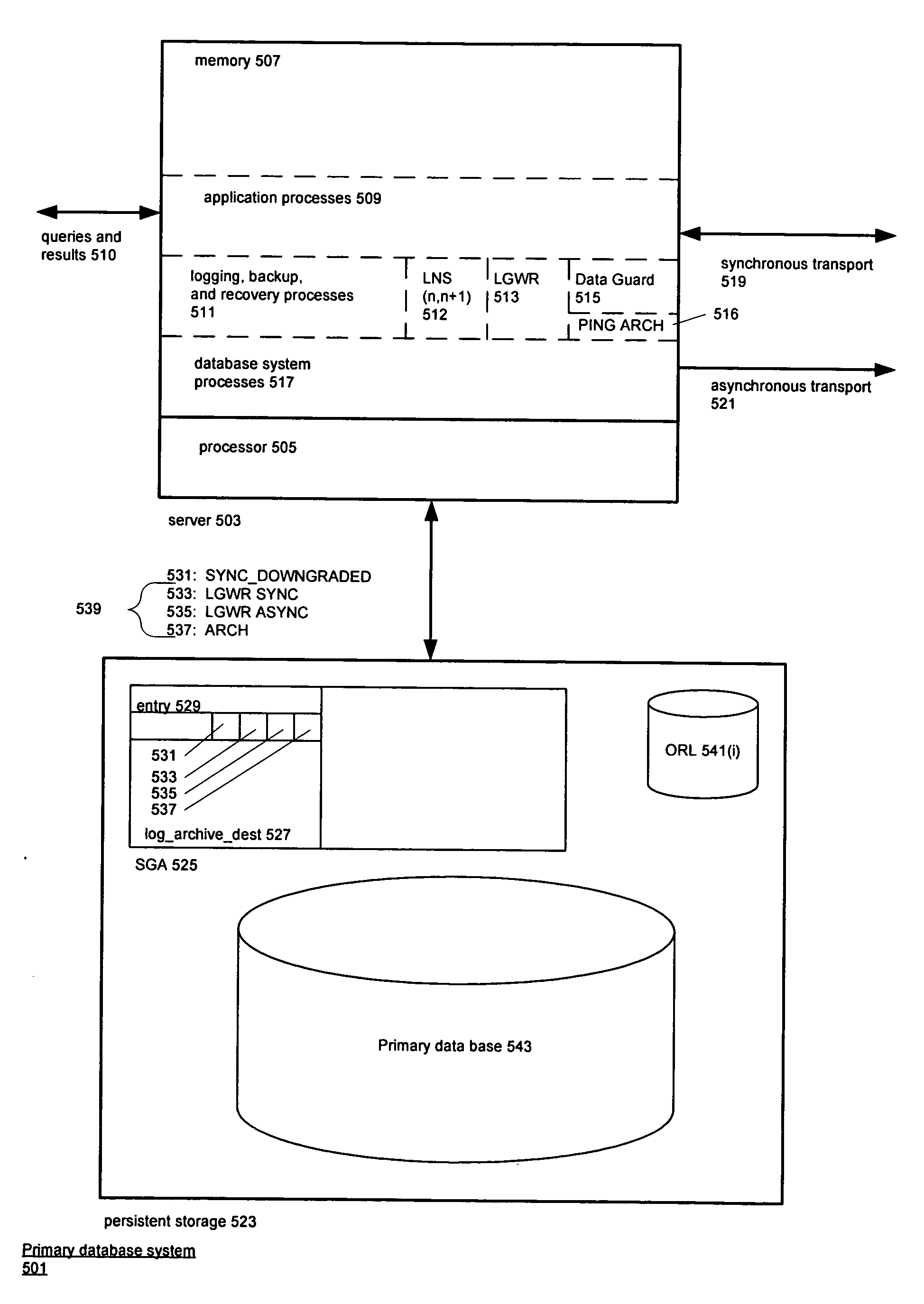Automatically changing a database system's redo transport mode to dynamically adapt to changing workload and network conditions
a database system and automatic change technology, applied in the field of database systems, to achieve the effect of reducing the probability of redo loss
- Summary
- Abstract
- Description
- Claims
- Application Information
AI Technical Summary
Benefits of technology
Problems solved by technology
Method used
Image
Examples
Embodiment Construction
[0049]The following Detailed Description will first present an overview of an improved technique for automatically changing to a different transport mode, will then present two implementations of the improved maximum availability mode, and will finally present details of how the second implementation is implemented in an Oracle 10gR2 database system manufactured by Oracle Corporation.
Overview of the Improved Technique for Automatically Changing to a Different Transport Mode: FIG. 2
[0050]FIG. 2 is a flowchart of a technique for automatically changing to a different transport for redo data mode on the basis of the whether a primary's transaction processing rate would be constrained by a transport mode. In the preferred embodiment, the possibly-constraining transport mode is the synchronous transport mode and there is only one other available transport mode, namely the asynchronous transport mode. In other embodiments, there may be other constraining transport modes. The technique of t...
PUM
 Login to View More
Login to View More Abstract
Description
Claims
Application Information
 Login to View More
Login to View More - R&D
- Intellectual Property
- Life Sciences
- Materials
- Tech Scout
- Unparalleled Data Quality
- Higher Quality Content
- 60% Fewer Hallucinations
Browse by: Latest US Patents, China's latest patents, Technical Efficacy Thesaurus, Application Domain, Technology Topic, Popular Technical Reports.
© 2025 PatSnap. All rights reserved.Legal|Privacy policy|Modern Slavery Act Transparency Statement|Sitemap|About US| Contact US: help@patsnap.com



